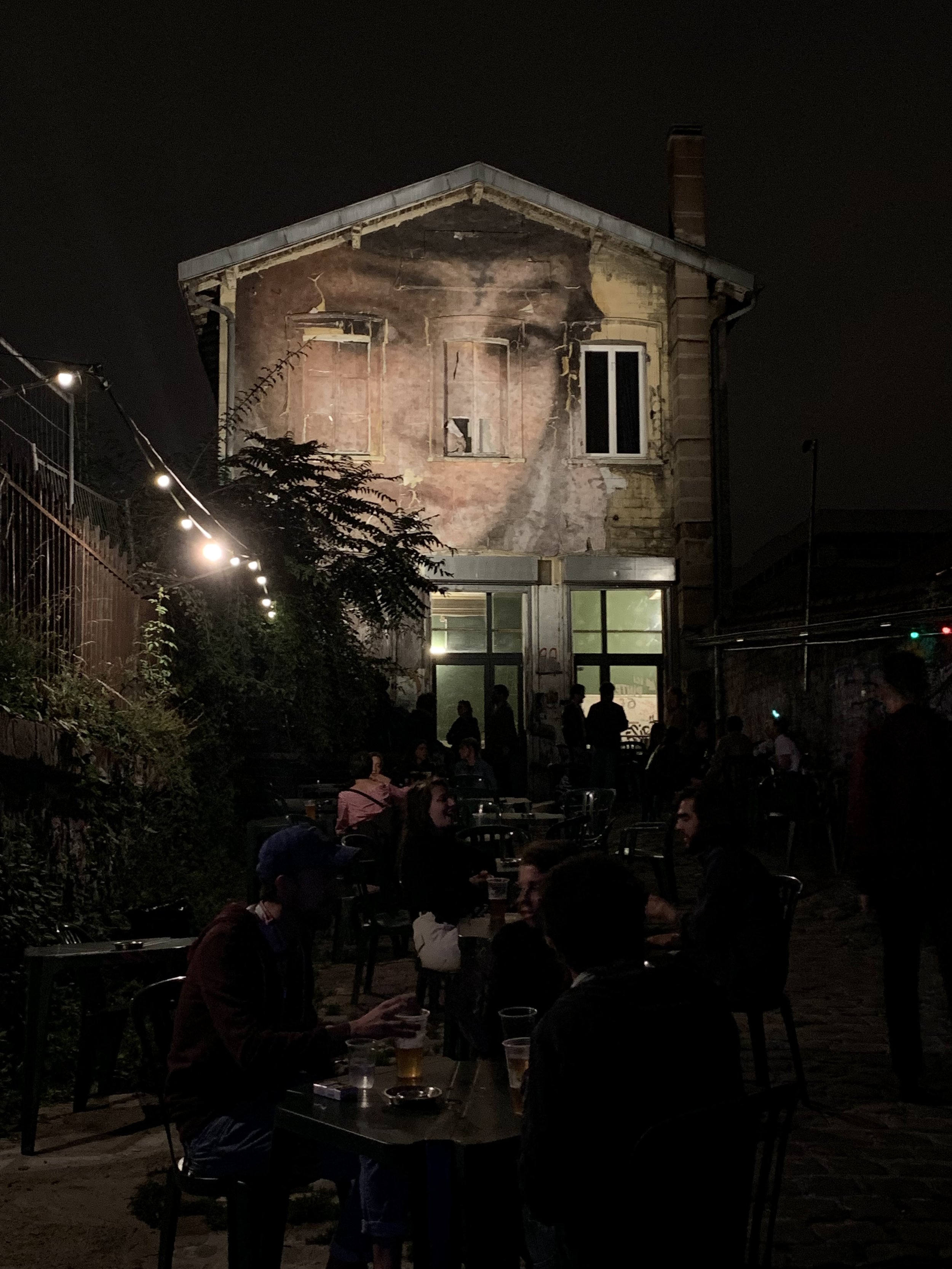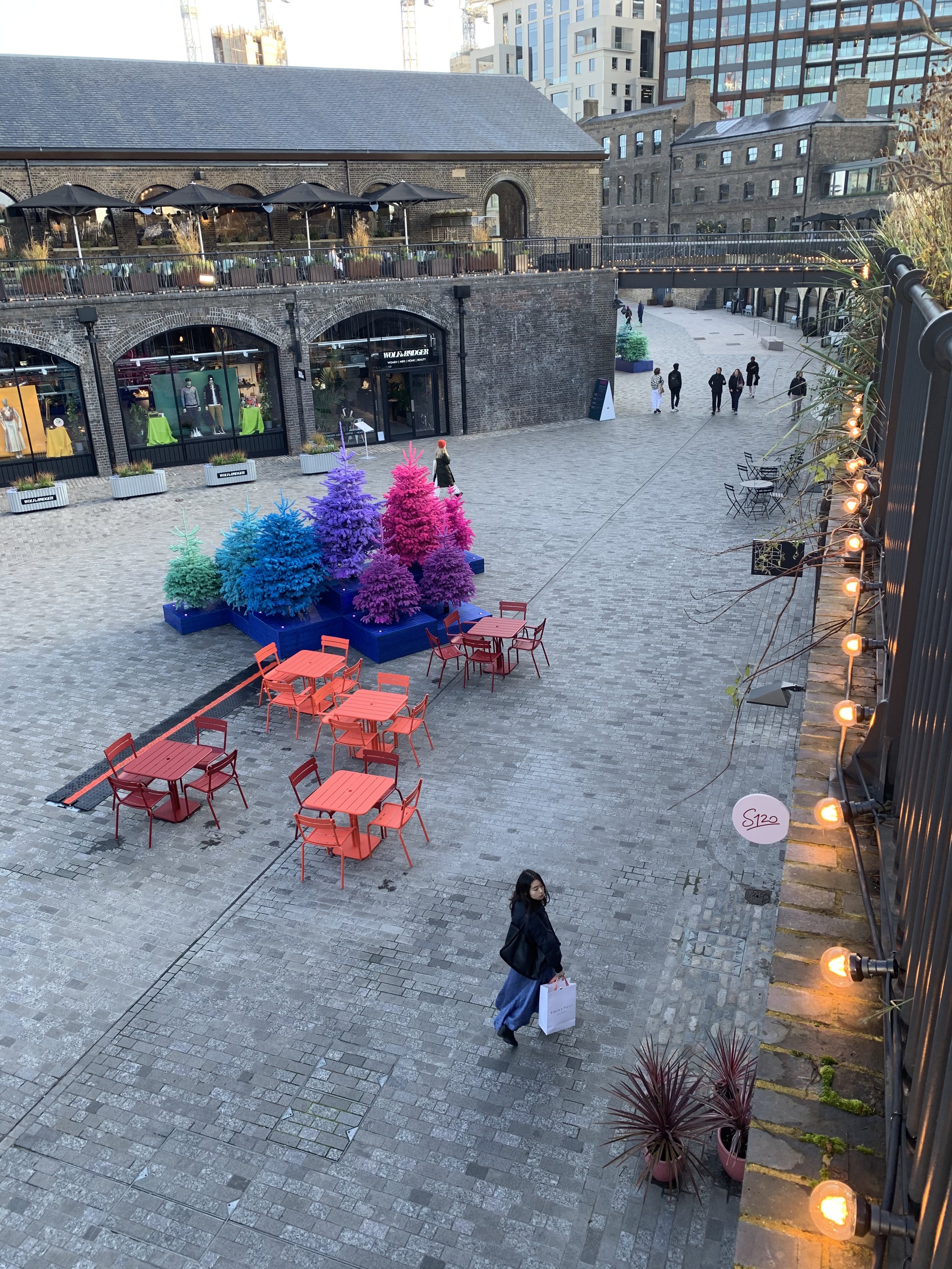Winding Paths: The World Economic Forum Centre for Urban Transformation's Lisa Chamberlain on Journalism, Policy, and Feminist Economists
Lisa by Aislinn Weidele.
By Julia Gamolina
Lisa Chamberlain is a communications and business development strategist with an emphasis on the built environment. Her diverse background includes consulting with architecture, planning and economic development firms; reporting on commercial real estate for The New York Times; and working as a legislative aide on Capitol Hill focused on transportation and urban policy. Currently she is the communications lead and urban strategist for the World Economic Forum’s newish Centre for Urban Transformation.
She has a BA from the UC Davis and an MS in Journalism from Columbia University, where she also studied urban planning. She lives with her two daughters in Brooklyn. In her interview, Lisa talks about media’s effect on the built environment, more equality for more innovation, and her multifaceted path, advising those just starting their careers to cultivate meaningful pursuits.
JG: Tell me about your foundational years - where did you grow up and what did you like to do as a kid?
LC: I grew up in Cleveland Hts. Ohio in the seventies and eighties, and had a pretty standard Gen X experience — riding bikes, playing kickball, minimal parenting. One of my most memorable childhood experiences was taking a family trip to Toronto. We stayed in a hotel downtown, and one night us kids were left to watch a movie in our room alone. We picked a horror movie that absolutely flipped me out. I was too wound up to get to sleep so my stepfather took me out for a walk around downtown Toronto. I remember thinking, wait, people walk around at night? No one walked around downtown Cleveland at night. It was my first urbanist revelation. Cleveland is doing a lot better now, but it was in bad shape at the time, and I remember wondering why.
19th arrondissement, Paris: “I stayed in this incredible neighborhood in 2019, and this photo is of a lively jazz club called La Gare.”
Bryant Park: “After moving to New York, I took photos all over the city. This one was taken with an old-fashioned film camera.”
Tell me how your work evolved, and you with it.
I’ve definitely had a winding career path. After graduating from UC Davis, I ended up back in Cleveland because it was the early ‘90s and the job market in California was terrible. My first job was reporting for a weekly paper that was later owned by the Village Voice. That was when I really began digging into Cleveland’s urbanism issues, particularly related to sprawl, which is really bad for a metro area that was losing population.
I left the paper to work on Dennis Kucinich’s first Congressional campaign, which we won, so then I went to Washington, D.C. to work on Capitol Hill. In that job, again I was drawn to urbanism issues, especially related to transit and environmental policy, such as redeveloping superfund sites, brownfields and other urban regeneration efforts.
Kucinich was not afraid to take on tough issues, and hoo-boy, did I get a lesson in politics. Too much to get into here but let’s just say, I felt like the Ohio girl who just fell off the turnip truck. I finished Kucinich’s first term and went back to the weekly paper and became the editor-in-chief. After that I moved to NYC, twenty years ago this past August, to do a master’s in journalism and urban planning at Columbia.
What did you learn about yourself in studying journalism and urban planning? What a great combination.
I knew I was going to move to New York since the first time I visited when I was 18 years old. It took a little while to figure out how to make it happen, so doing the mid-career master’s program at Columbia’s Graduate School of Journalism was my entry point. The idea behind the program was for experienced journalists to develop a specialization, and I knew I wanted to report on cities from an urbanist perspective. So I took most of my classes at GSAPP.
One of the most important things I learned was how impactful journalism can be on a city’s physical planning and development. This is especially true of New York, which had a flourishing media environment in the city’s formative years. The realization of Central Park, for instance, could have gone in a very different direction were it not for how the media covered it.
After finishing the program, I cold-pitched the editor of The New York Times real estate section and ended up reporting on commercial real estate for the Times throughout the mid-aughts. It was a great time to fly around the country reporting on redevelopment projects. Every city had something ambitious and interesting happening. I also freelanced for Metropolis Magazine, New York Observer, Planning Magazine, and started a blog called Polis. It was a really fun time in my life.
“One of the most important things I learned was how impactful journalism can be on a city’s physical planning and development...The realization of Central Park, for instance, could have gone in a very different direction were it not for how the media covered it. ”
How did you start working with architects and planners?
I could see that both real estate and journalism were heading for a crash, so in early 2008 I took the Executive Director position at the Forum for Urban Design (now called the Urban Design Forum). It was in that capacity that I met a lot of interesting architects and urban designers working in the public realm. I wasn’t in that job for long — children! — but that paved the way for me to work both in-house and as a consultant with some of the premier architecture firms in New York such as Marvel, Ennead, WXY, Rogers Partners.
I did a wide range of things, depending on their in-house capacity. For some I was a high-level writer and strategist for pursuits and business development; for others I created thought leadership pieces and project-managed marketing collateral; for others I was involved in design competitions and presentations. I brought a certain journalistic and policy perspective that most firms don’t typically have.
Looking back at it all, what have been the biggest challenges? How did you manage through a disappointment or a perceived setback?
Laying it out like this does make it sound very neat and tidy, but that is most definitely not accurate. I’ve had failures and struggles for sure. I wrote a book that took entirely too long and did not sell well. I had a stint at a PR firm that I was not suited for. I even got fired from my first job at a nut and candy store for eating too much candy! True story. But aside from specific failures, I would say the biggest challenges are the ones I brought on myself by moving around so much and taking on new things that I wasn’t fully prepared for. That creates anxiety and doubt.
Kings Cross, London: “This urban regeneration success story could have gone very badly had the original plan been carried out; instead, it was allowed to evolve more organically.”
Cortona, Italy: “Cortona is an ancient Umbrian city on a hill in Tuscany; except for a couple of renaissance churches, medieval architecture is predominant.”
Where are you in your career today? What is on your mind most at the moment?
It turns out that even a winding path leads somewhere! On a whim a friend sent me a job opening last summer with a note that said it sounded like the perfect fit for me. So I’m now the communications lead and urban strategist for the World Economic Forum’s newish Centre for Urban Transformation. We’re building a platform to help cities with issues around climate change preparedness, pandemic recovery, sustainable urban design, renewable energy, etc. Pretty much everything I’ve ever worked on or written about is wrapped up in one job. A core part of the job is creating thought leadership content and developing case studies around urban transformation projects. Pitches welcome!
What are you most excited about right now?
I’m super excited about the upcoming Urban Transformation Summit in Detroit, which we’ve been planning for many months. There are a lot of smart-city, mobility, urbanism-focused conferences these days, so what sets this one apart is the emphasis on building coalitions around mission driven public-private collaboration.
So what does that mean? For example, we worked with the Lord Mayor Sally Capp of Melbourne to bring together the private-sector partners she needs to realize an ambitious goal to get the entire city operating on renewable energy. Her vision, called Power Melbourne, will result in a network of neighbourhood-based batteries to allow renewable energy to be stored and used as needed, to help balance supply and demand, and reduce power costs. The city needed help figuring out how to structure it in a way attract capital to this project.
There are so many issues like this that cities have never dealt with before, no existing off-the-shelf solutions. These are the types of public-private collaborations we’re working on and will be featuring at the Summit.
“I just want to do my best and not worry too much. Success would be doing both at the same time.”
Who are you admiring now and why?
It might seem odd that I’m not picking urbanists but I’ve become obsessed with my generation’s feminist economists who are changing their profession, such as Mariana Mazzucato and Heather Boushey. Their work is exactly on point for cities—equitable growth, innovation, and a more entrepreneurial relationship between government and the private sector. Cities are cauldrons of inequality but they’re also the incubators of innovation. Boushey makes a compelling case that reducing inequality would in fact increase innovation and productivity, while Mazzucato argues that innovation doesn’t happen magically but through mission-driven collaborations between the public and private sectors. These two points are central to the Centre for Urban Transformation.
What is the impact you’d like to have in the world? What is your core mission? And, what does success in that look like to you?
At one point I would’ve had a very ambitious answer to this question. Now I would say I just want to do my best and not worry too much. Success would be doing both at the same time because most days those two goals feel incompatible.
Kitsilano, Vancouver: “Vancouver is one of my all-time favorite cities and Kitsilano is one of the loveliest places to be.”
Monti, Rome: “I love this atmospheric photo of people hanging out at the local cafe that was downstairs from the apartment I stayed in.”
Finally, what advice do you have for those starting their career? Would your advice be any different for women?
That’s actually a tough question. My mom was a second-wave feminist, and she always told me that I could be and do anything I wanted. Her intentions were good but that was not exactly true. Her context was very different from mine. And young women today are in a very different context than when I started. So I’m not sure anyone should take advice from me except maybe a book recommendation: Machiavelli For Women: Defend Your Worth, Grow Your Ambition, and Win the Workplace. To that I would add: exercise, meditate, develop life-long friendships, and cultivate meaningful pursuits. That’s all I got.
And that is all wonderful. Thank you Lisa!
This interview has been edited and condensed for clarity.






